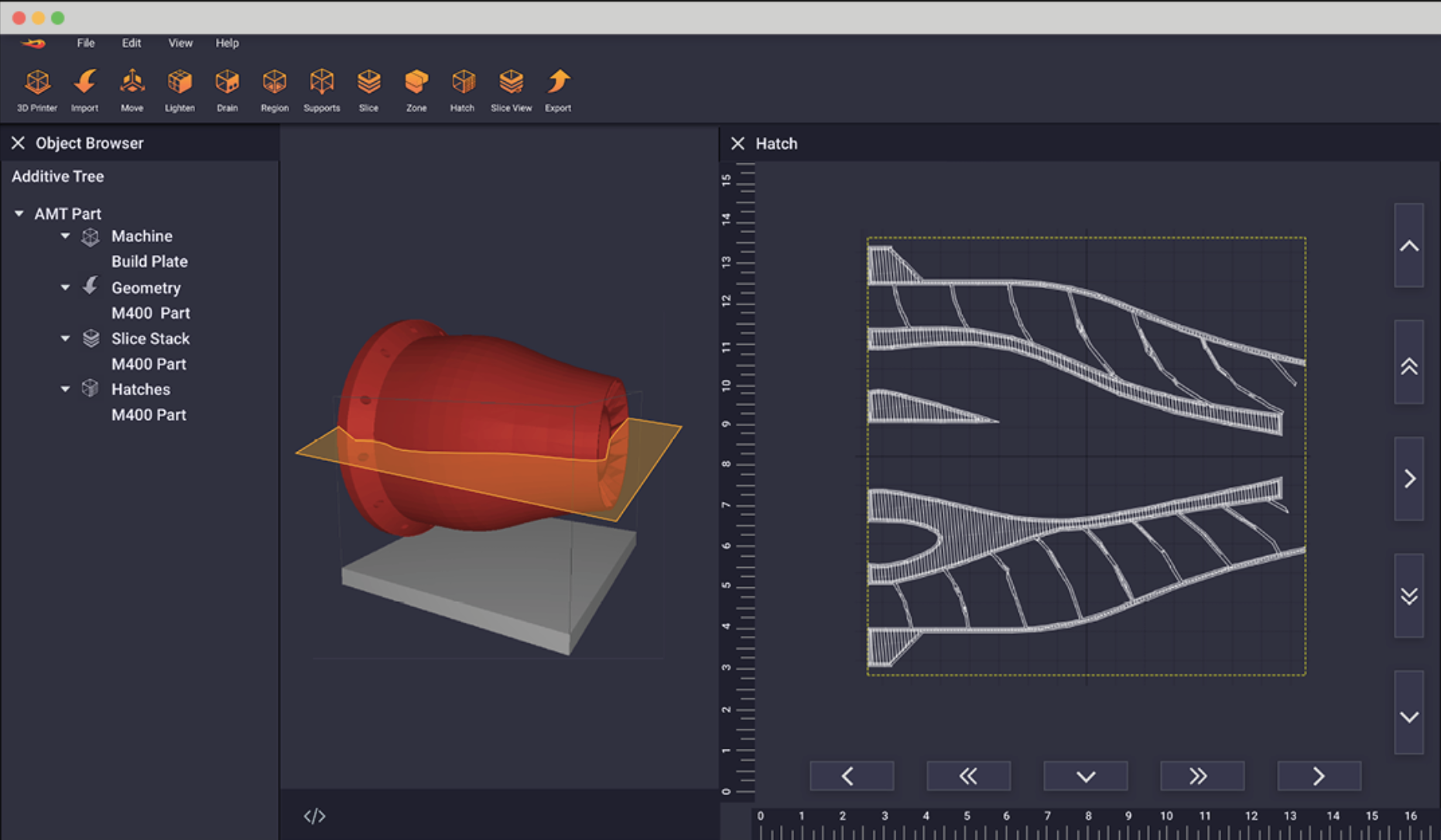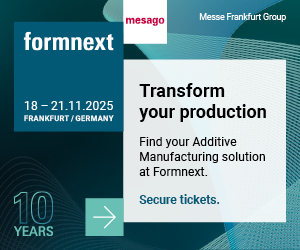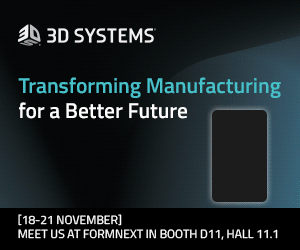Seattle startup Dyndrite announced a strategic new partnership with Hewlett Packard (HP) to license Dyndrite’s geometric kernel technology and power the next generation cloud and edge-based digital manufacturing solutions. By combining HP’s end-to-end manufacturing management expertise with Dyndrite’s cutting edge additive technology, HP is hoping to deliver a software platform capable of powering the additive manufacturing (AM) factories of the future.
In 2019, 26-year old Harshil Goel’s company Dyndrite emerged out of stealth mode to reveal the world’s first GPU-native geometry engine, the Dyndrite Accelerated Geometry Kernel (AGK). Since geometry kernels were first introduced decades ago, they have been a crucial component in advancing 3D CAD/CAM/CAx software. Still, the company claimed this software have not kept pace with changing computational architectures, modern manufacturing technologies, and modern design needs. In order to address this challenge, Goel teamed up with veteran mathematicians, computer scientists, and mechanical engineers to develop a new solution that could level the playing field so that the manufacturing hardware no longer surpassed the software, facilitating the AM industry to reach its potential.
“The promise of 3D printing is to deliver unique parts and tools not possible through traditional methods, and do so on an industrial and global scale. For this to happen the industry must evolve and Dyndrite’s mission is to accelerate this change,” said Goel, now CEO of Dyndrite. “HP is a clear leader in industrial 3D printing and this collaboration speeds the game-changing impact our technology brings to the AM community at large. We applaud HP’s vision and look forward to a long and fruitful partnership for years to come.”
The new alliance builds on HP’s focus on expanding its software and data platform to help customers fully realize the transformative power of 3D printing technology. Through the development of new solutions that leverage the Dyndrite kernel, HP expects to improve efficiency, enhance performance and quality, enable mass-personalization, automate complex workflows, and create scalability and extensibility for continued partner and customer innovation. The ultimate goal for both companies is to change how the software works in the AM industries, driving new performance and functionality.
In that sense, Dyndrite claims that its fully native GPU Kernel easily handles additive specific computations such as lattice, support, and slice generation, in some cases reducing compute times from hours or days to minutes or seconds. For heavy use cases, the Dyndrite kernel is naturally scalable with access to additional GPU nodes, whether locally or in the cloud and provides both C++ and English-readable Python APIs, making application development accessible to a wide variety of users, including non-programmers such as students, mathematicians, and mechanical engineers. Probably what most interests HP is providing developers and original equipment manufacturer (OEM)s with a tool capable of representing all current geometry types, including higher-order geometries such as splines (NURBs), surface tessellations, volumetric data, tetrahedra, and voxels, allowing the development of next-generation applications and devices.
“Innovations in software, data intelligence, and workflow automation are key to unlocking the full potential of additive manufacturing,” said Ryan Palmer, Global Head of Software, Data and Automation of HP 3D Printing and Digital Manufacturing. “We are committed to advancing our digital manufacturing platform capabilities and this strategic collaboration with Dyndrite is an exciting next step on the journey.”
Building upon HP’s leading position as a behemoth technology firm, the company has acquired and partnered with dozens of companies to broaden its ecosystem and accelerate innovation and speed product development and supply chain efficiencies. HP also supports numerous 3D printing and digital manufacturing open standards to ensure data interoperability and choice for customers.
As a global provider of industrial-grade 3D printing and digital manufacturing solutions, HP offers systems, software, services, and materials science innovation to its customers. These solutions already include numerous software and data innovations, like its HP 3D Process Control and HP 3D Center software offerings.

Dyndrite’s new GPU-powered, python-scriptable, additive manufacturing build processor at work (Image courtesy of Dyndrite Corporation)
The new HP and Dyndrite partnership builds on a relationship that first began when HP became one of the inaugural members of the Dyndrite Developer Council, a group of leading 3D printing systems, software, and solutions providers. Along with Aconity3D, EOS, NVIDIA, Plural Additive Manufacturing, and Renishaw, HP was chartered with steering the future direction of the company’s roadmap. The driving force behind Goel’s venture is advancing the design and manufacturing software tools used today, which he said were built more than 30 years ago and are becoming bottlenecks to today’s creativity and productivity. Especially when compared to the manufacturing hardware that over the past few years has given rise to new design philosophies and a whole new paradigm of manufacturing production.
In this sense, Dyndrite is creating next-generation software for the design, manufacturing and additive marketplace, with the goal to dramatically increase the workflow and efficiency of AM technologies. With Dyndrite joining HP’s global ecosystem, HP advances 3D printing and digital manufacturing solutions, improving the overall experience for its customers and moving the industry forward.
Subscribe to Our Email Newsletter
Stay up-to-date on all the latest news from the 3D printing industry and receive information and offers from third party vendors.
Print Services
Upload your 3D Models and get them printed quickly and efficiently.
You May Also Like
Owens Industries Acquired: What the Deal Means for Metal 3D Printing
AFM Capital Partners has acquired Owens Industries through its portfolio company, Pro Products, adding one of Wisconsin’s leading ultra-precision CNC machining companies to its manufacturing platform. Owens makes very accurate,...
3D Printing News Briefs, November 12, 2025: Standards, Printhead, UV Printing, & More
We’re starting with standards news from ASTM International in today’s 3D Printing News Briefs, and then moving on to business, as Precision Plastics Australia launched a new collaborative venture. ValCUN...
Read the Stratasys & AM Research Tooling White Paper, Then Attend the Webinar October 16
Earlier this month, AM Research released a white paper produced in collaboration with Stratasys titled “3D Printed Tooling: A Generational Opportunity to Reshape Supply Chains,” which you can download here. Now,...
Available on Kickstarter: Split3r Lets You 3D Print Big Parts on Small 3D Printers
French 3D printing company Qualup has been in the industry since 2011. The company has a good reputation in making high-temperature Material Extrusion systems and volumetric sensors for more precise...




































